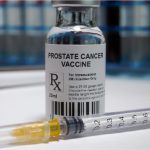Prostate cancer occurs in the prostate, a gland in the male reproductive system. Read more about prostate cancer here.

Surgery is one of the most recommended treatments for prostate cancer. Surgical procedures alone can cure localised prostate cancers, and are used as a part of the main treatment to for advanced prostate cancers. The surgery basically involves the removal of the prostate gland and the nearby tissues. The most common procedure is prostatectomy. The types of surgeries available for prostate cancer:
Open approaches to radical prostatectomy:
This is the traditional surgical method to treat prostate cancers. Radical prostatectomy is an open approach and is carried out by the surgeon making a long incision to remove the prostate.
There are two types of radical prostatectomy:
Radical retropubic prostatectomy:
Radical retropbic prostatectomy involves the surgeon making a thin long incision in the lower abdomen to reach the prostate gland and remove it along with the nearby tissues. During the treatment, the patient is given general anesthesia or, spinal or epidural anesthesia.
Lymph node biopsy is done if there is a chance that cancer has spread to the lymph nodes.
Incase it is confirmed that the prostate cancer has spread to the lymph nodes, this procedure is not recommended because it does not help in curing the cancer and can have adverse side effects.
Radical perineal prostatectomy:
This procedure is carried out by the surgeon making incisions in the skin between the anus and scrotum. Radical perineal prostatectomy can cause erection problems and does not remove the nearby lymph nodes. Hence, it is recommended only for patients who do not have issues with the erection problems and do not require to get the lymph nodes near the prostate to be removed. However, it has less adverse effect on the body and also takes lesser time.
Laparoscopic approaches to radical prostatectomy:
Laparoscopy is carried out by making small incisions and uses long surgical needles/tools to resect the prostate. Laparoscopic approach to radical prostatectomy must be carried out by a skilled and experience surgeon, only after if it is recommended to be a safe treatment for the patient.
Laparoscopic radical prostatectomy:
This procedure is carried out by the doctor making thin long incisions through which the prostate gland is reached and removed with the help of a special long instrument. The doctor will be able to view the inside of the body with the help of a small video camera attached to the surgical tool. This camera helps the doctors in precise treatment.
When laparoscopic prostatectomy is performed carefully and accurately, its results are similar to the open approaches. However, laparoscopic approaches cause less blood loss and pain along speed recovery.
Robotic-assisted laparoscopic radical prostatectomy:
This procedure of laparoscopic radical prostatectomy is performed using robotic systems, and hence, it is also known as robotic prostatectomy. The treatment is carried out by the robotic arms making small incisions in the patient’s abdomen. These robotic systems are controlled by the surgeons who are seated in the control panel of the operating room. Robotic-assisted LRP is advantageous in terms of pain, blood loss and recovery time.
Transurethral resection of the prostate (TURP):
TURP is used in treating benign prostatic hyperplasia (BPH), which are non-cancerous enlargement of prostate cancer. It is used to treat the symptoms and pain caused by advanced prostate cancer. This operation is carried out by the surgeon giving general or spinal anesthesia to the patient. It involves the removal of the inner portion of the prostate gland that surrounds the urethra. During the surgery, instead of cutting the skin, a resectoscope is passed through the tip of the penis into the urethra to reach the prostate gland, after which the tissue is cut or vaporized by passing electricity or radiation.
Post the surgery, a thin, flexible tube called the catheter is placed through the penis to drain the urine while the prostate heals. It is usually kept for one to two days. Patients might experience blood in the urine and become prone to infections.
Complications due to surgeries:
Urinary incontinence:
This is one of the major side effects of surgical procedures to treat prostate cancer. This is a phenomenon where men cannot control their urine or experience leaking of the urine. Post surgery, men experience a constant urinary incontinence, known as continuous incontinence. There are three major types of urinary incontinence:
- Stress incontinence: This is the leakage of urine when a person sneezes, cough, laughs or exercises. This is caused due to the problems of the valve in the urinary bladder which is responsible to keep the urine in its place. Prostate cancer treatments damage the muscles and nerves of this valve leading to stress incontinence.
- Overflow incontinence: Men with overflow incontinence have a trouble in emptying their bladder. They take a lot of to urinate, after which a they urinate a dribbling stream with little force. This condition is caused due to the blockage or narrowing of the bladder outlet by scar tissue.
- Urge incontinence: Post surgical procedures, the urinary bladder find it difficult to stretch its walls to the urine because of which men get the urge to urinate.
Erectile dysfunction(impotence):
This is a phenomenon because of which men cannot get erection sufficient for sexual intercourse. During surgical procedures, if the nerves that cause erection are removed, men will find difficulty in getting spontaneous erections. Impotence of a man depends on the type of cancer and treatment. Radical prostatectomies have reported lower impotence rates in patients.Read more about erectile dysfunction here.
Changes in orgasm:
The prostate gland and the seminal vessels are responsible for the secretion of the semen. Removal of these glands affect the ejaculation of the semen. Men experience pleasure during the sensation, but their orgasm remains to be dry. In a very few cases, men experience pain during orgasms.
Loss of fertility:
As a part of the surgical procedure to treat prostate cancers, the pathways of the sperm, the vas deferens which are present between the testicles and the urethra are removed, because of which the sperm does not come out during ejaculation.
Lymphedema:
Lymph nodes are pathways for the fluids of the body to reach the heart. Removal of lymph as a part of treating prostate cancer results in the accumulation of these liquids in the legs or genital area which leads to swelling or pain in those areas.
Change in penis length:
Shortening of the urethra is caused when a portion of the urethra is removed along with the prostate. This results in the slight decrease of the penis length.
Inguinal hernia:
Prostatectomy increases the risk of developing groin hernia in the future.
Loss of blood:
Loss of red blood cells leads to anemia, while lowered white blood cells makes the patient prone to infections. Lowered platelet count makes it difficult for the person to heal injuries.
Other complications include:
- Fatigue
- Blood in urine
- Paim
- Bowel dysfunction
Outlook:
Surgeries have upto 100% success rate in treating prostate cancer, especially localised prostate cancer. In treating advanced prostate cancer, surgical procedures can treat the cancer that is resectable. Read more about the treatment methods of prostate cancer here.



